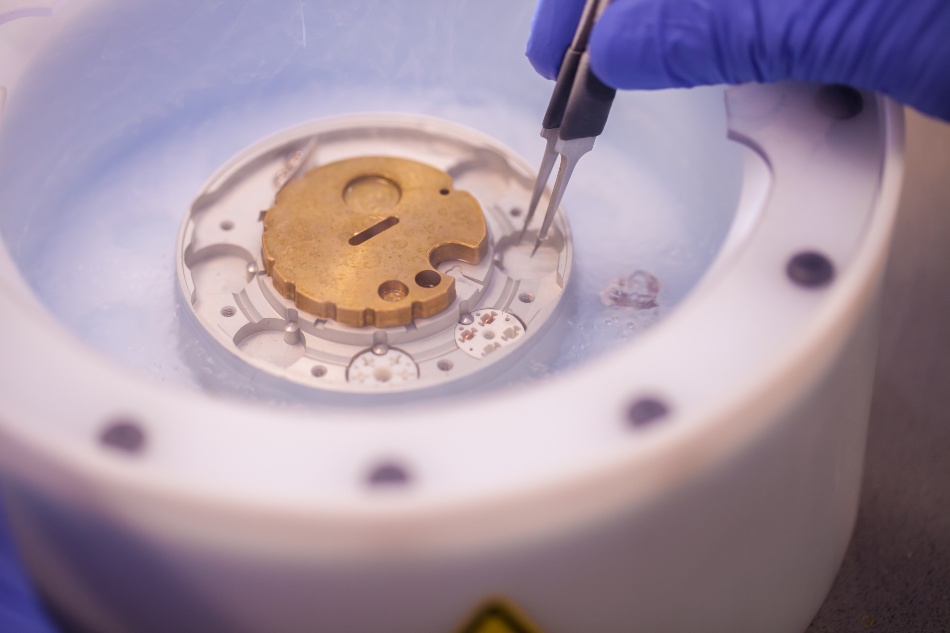
Image Credit: PolakPhoto/Shutterstock.com
Light vs. Electron Microscopy
Light microscopy involves an initial passage of visible photons through a sample that is eventually refracted through the optical lenses of the microscope, allowing for an image of the specimen to be viewed. While the radiation source in a light microscope is visible photons, electron microscopy (EM) instead utilizes electrons as its radiation.
The radiation source in EM is housed under a high vacuum until it accelerates down the microscope column at voltages ranging from 80 kV up to 300 kV. Electromagnetic lenses of the microscope are then used to focus the scattered electrons that have passed through the specimen.
What is cryo-EM?
While EM techniques are useful for analyzing a variety of sample types, certain biological materials such as biomolecules are not compatible with the high-vacuum conditions and electron beam acceleration required in EM, primarily due to the presence of water that surrounds many biomolecules. Such harsh conditions can cause the water to evaporate and ultimately destroy the biomolecules before any imaging can be performed.
In an effort to overcome such limitations, cryo-EM instead uses frozen samples and electron beams of lower intensity. Cryo-EM can be found in a wide variety of biological applications, some of which include the imaging and analysis of intact tissue sections and frozen cells, as well as individual bacteria, virus, and protein molecules. Some of the most widely used subdisciplines of cryo-EM include cryo-electron tomography, single-particle cryo-EM, and electron crystallography.
What are Microtubules?
Microtubules are highly complex polymer structures comprised of αβ-tublin that play a structural role in a wide variety of cellular organisms. In addition to this function, microtubules are also critical for various cellular processes, some of which include cell signaling and migration, intracellular transport process, and chromosome segregation.
How are Microtubules Formed?
When cultured in vitro, microtubules can self-assemble from high concentrations of purified tubulin subunits. However, the reality of microtubule formation instead occurs at much lower tubulin concentrations through a kinetically limiting process known as microtubule nucleation. For microtubule nucleation to occur, γ-tubulin is used as a template whereas other factors such as 2.2 MDa γ-tubulin ring complex (γ-TuRC) and five related γ-tubulin complex proteins referred to as GCP2-6 directly nucleate the microtubules.
In a recent Nature publication, cryo-EM was used to elucidate further the specific structure of some of the molecules that are critical to the microtubule nucleation process from Xenopus laevis, an African clawed frog. In their work, a 14-spoked arrangement of GCPs was discovered. In addition, this work also revealed that -tubulins exist in a partially flexible open left-handed spiral and are accompanied by a uniform sequence of GCP variants.
Another interesting detail of this study discovered the presence of actin, which is another type of protein that plays a role in cellular motion, within the structure of γ-TuRC, indicating its potential role in microtubule nucleation that was not previously known.
Conclusion
In conclusion, the cryo-EM technology provided a unique method of investigating the structure and formation of several molecules involved in microtubule nucleation. The unprecedented insights presented in the discussed Nature study are expected to assist future research endeavors aimed towards furthering the understanding of many of the fundamental biological processes that require microtubule formation, such as spindle formation that occurs during mitosis and meiosis, as well as centriole biogenesis.
References and Further Reading
- “Explainer: What is cryo-electron microscopy” – Chemistry World
- Milne, J. L. S., Borgnia, M. J., Bartesaghi, A., Tran, E. E. H., Earl, L. A., et al. (2013). Cryo-electron microscopy: A primer for the non-microscopist. The FEBS Journal 280(1); 28-45. DOI: 10.1111/febs.12078.
- Liu, P., Zupa, E., Neuner, A., Böhler, A., Loerke, J., et al. (2019). Insights into the assembly and activation of the microtubule nucleator g-TuRC. Nature
Disclaimer: The views expressed here are those of the author expressed in their private capacity and do not necessarily represent the views of AZoM.com Limited T/A AZoNetwork the owner and operator of this website. This disclaimer forms part of the Terms and conditions of use of this website.